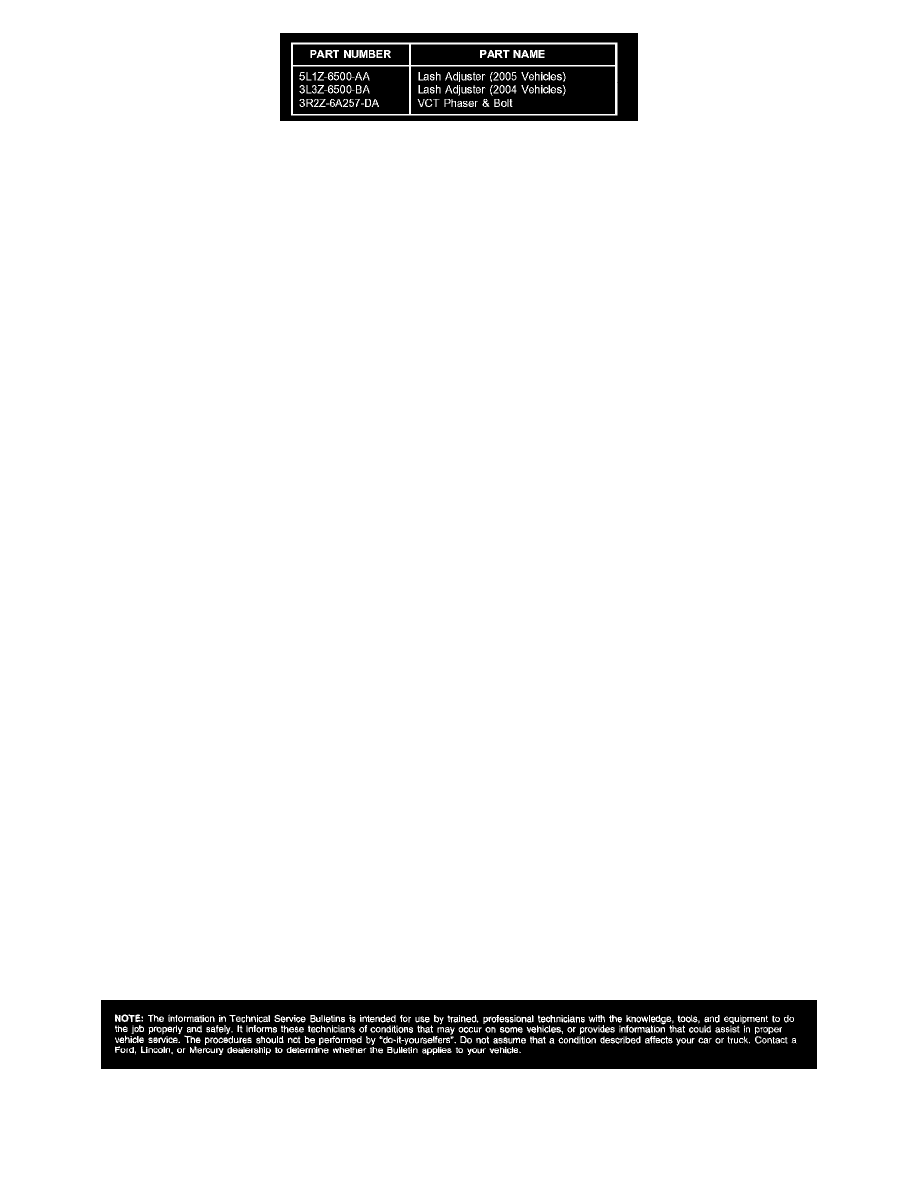F 150 Heritage 2WD Pickup V8-4.6L SOHC VIN W (2004)

Once the above pre-checks are complete, check for sound level from the following components, in the order listed. Compare the sound from these
components to the noise the customer is concerned with, to determine the source of the noise.
INJECTION / FUEL SYSTEM
Injector noise (ticking) is considered normal. Noise increases with RPM hot or cold and is recognized at the top of the engine.
VALVE TRAIN
Lash adjusters can make a ticking/tapping noise noticeable at any engine RPM/temperature and is audible through the wheel well or an open hood.
However, with the hood down, lash adjuster noise can be heard as a light tapping noise through the wheel well and is considered normal.
Tracing this noise must be isolated to a cylinder bank. If one bank is louder than the other bank, focus the diagnostic to the loud bank. If both banks seem
loud with the hood down, compare wheel well sound level to another comparable vehicle.
Use a stethoscope on the top of the cam cover bolt heads to confirm which bank is affected. Move the probe from front to rear if necessary.
If isolated, replace all the lifters, intake and exhaust, only on the affected cylinder bank.
VARIABLE CAM TIMING
The 4.6L 3V and 5.4L 3V variable cam timing (VCT) feature may emit a light knock in normal operation and is audible only at idle speed, with a hot
engine (gear selector in park/neutral). However, it may be masked by or mistaken for other noises generated from either injector firing or a
malfunctioning valve train as described above. The noise does not affect performance or durability of the part.
VCT phasers may knock at hot idle. It may be heard inside the passenger compartment, or the wheel well area. Some light noise is normal. The engine
may require a cold soak overnight for a full diagnosis to effectively be made at hot idle, particularly when a VCT phaser is suspected. The knock is not
prevalent at cold temperature.
To test for VCT noise:
1.
Place the transmission in park or neutral.
2.
Bring engine oil temperature to 160° F (71° C) or above as indicated by the scan tool "EOT" PID.
3.
Allow engine to idle, and determine if noise is noticeable.
4.
Set engine speed to over 1200 RPM (if noise is a VCT knock, the noise should disappear).
5.
Return engine speed to idle (verify knock returns).
If the noise intensity is more than a lightly audible knock at hot idle under 1200 RPM at engine operating temperature, replace the cam phaser using the
camshaft "In-Vehicle Repair" procedure found in the Workshop Manual.
WARRANTY STATUS: Eligible Under Provisions Of New Vehicle Limited Warranty Coverage
DEALER CODING
CONDITION
BASIC PART NO.
CODE
6007
42
Disclaimer
